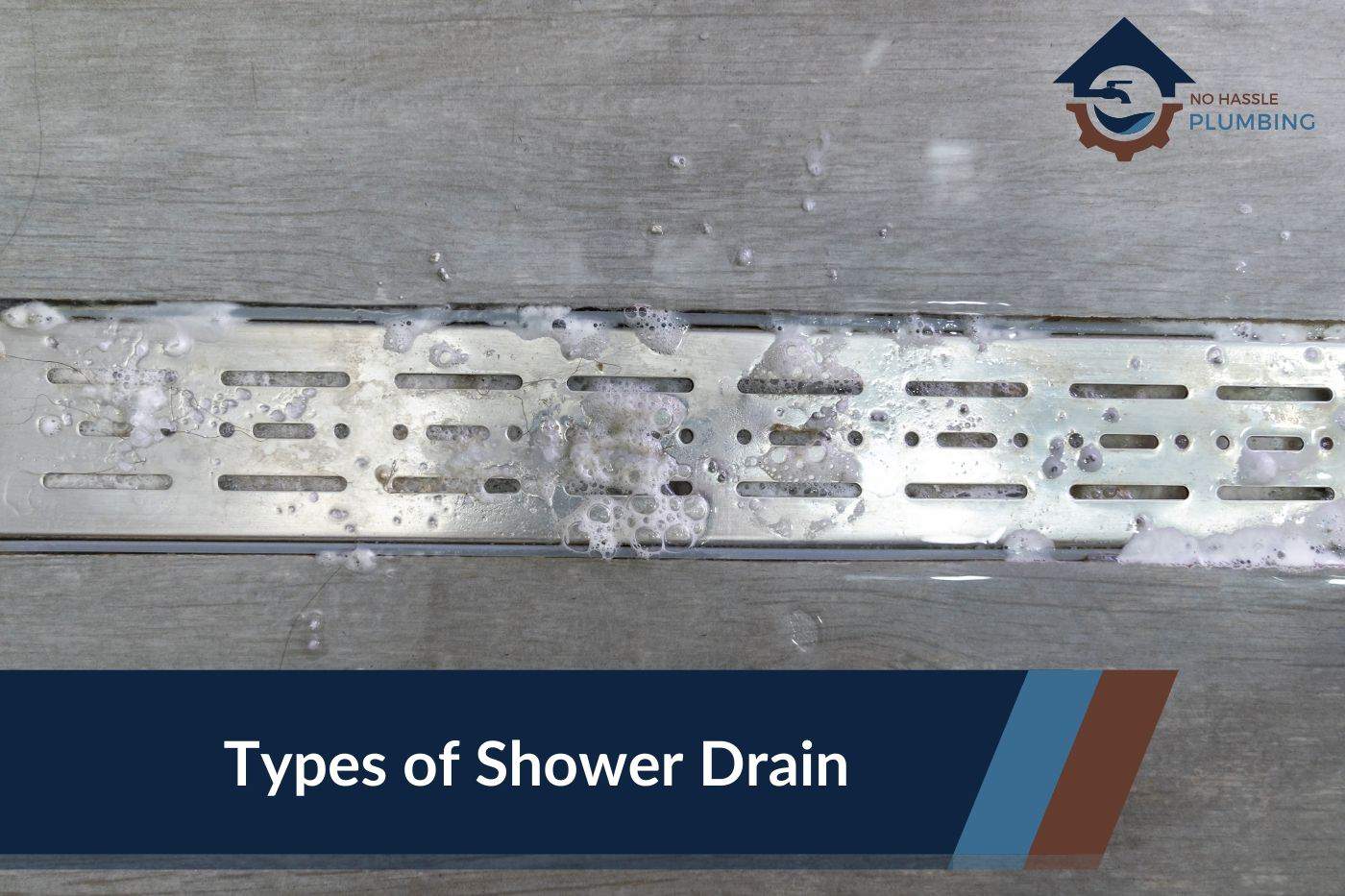When it comes to redesigning your bathroom, make sure you don’t overlook the importance of shower drains. Not only does choosing the right type contribute to the aesthetic of the room – they play a critical role in the overall usability of your bathroom
From linear drains and circular grates, to designs that are hidden from sight, there are a multitude of options available. However, beyond simply finding something that matches the look of your bathroom, you should also consider how easy it is to maintain, as well as drainage capabilities when making the best decision for your space.
Let us help you make an informed decision – explore all of the different types of shower drains available today!
Contents
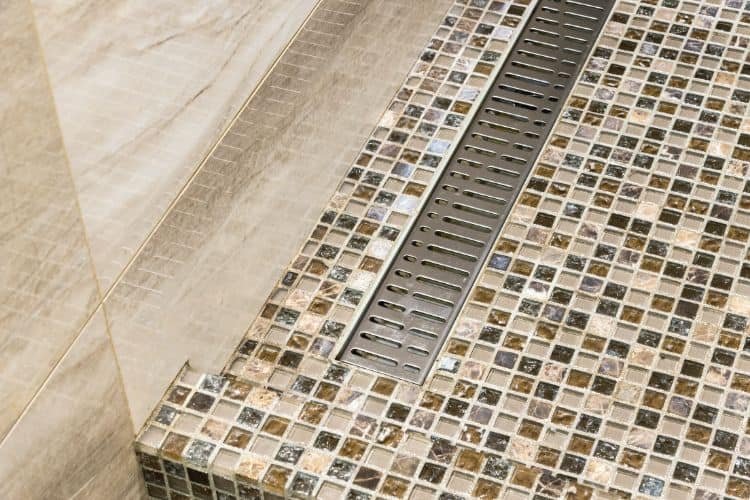
Shower Drains: Key Takeaways
- Shower drains are more than just about aesthetics, as they also play a crucial role in the general functionality of a bathroom.
- There are several factors you’ll need to consider from water flow and drainage, maintenance, and which shower drain grate size and grate style you prefer.
- Drains come in two main flavors – point drains, which collect water at a single point, and linear shower drains, which collect water in a recessed channel.
- These can be further subdivided into the number of components as single-piece, three-piece, and multi-piece – each with their own benefits and drawbacks.
What are the Two Main Shower Drain Types?
There are two main types of shower and bathtub drains – linear and point drains.
Both types have several different build and design styles to suit your bathroom’s needs and your specific tastes. In both cases, it is essential to ensure that the entire shower floor is sloping towards the drain to ensure proper drainage.
1. Point Drains
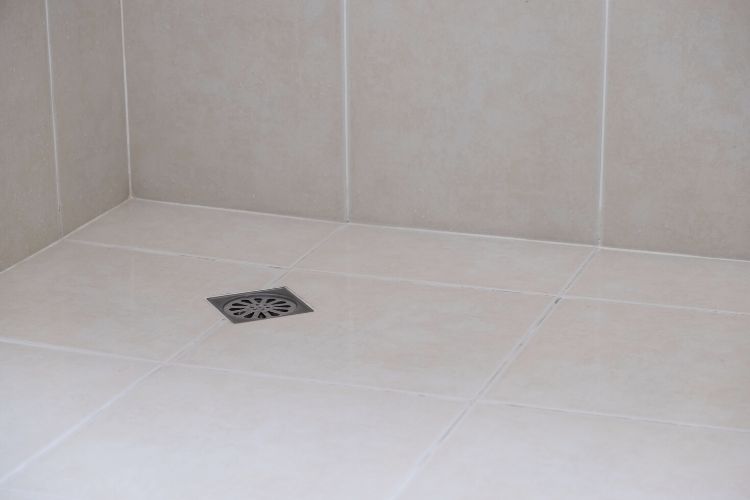
As the name suggests, a point drain is designed to collect water from a single point in the shower pan. Due to their compact size, they are often used in smaller shower stalls and are a fashionable choice for those who want a minimalist, modern look in their bathroom.
Typically installed in the center of the shower floor, they require a hole to be cut in the shower pan to accommodate the drain body. The threaded drain body is then connected to the drain pipe, with the grate placed on top.
Lastly, when installing a point drain, you will need more than one slope, all pointing towards the drain. Failure to do this will result in puddles of undrained water.
Features and Benefits of Point Drains
- Space-saving: Point drains are ideal for smaller bathrooms as they take up less space on the shower floor than other types of drains.
- Aesthetic appeal: Point drains are often designed with a sleek, modern look that can enhance the overall aesthetic of your bathroom.
- Easy to install: These are relatively easy to install, which can be a plus for those who want to tackle the job themselves or save on installation costs.
2. Linear Shower Drain
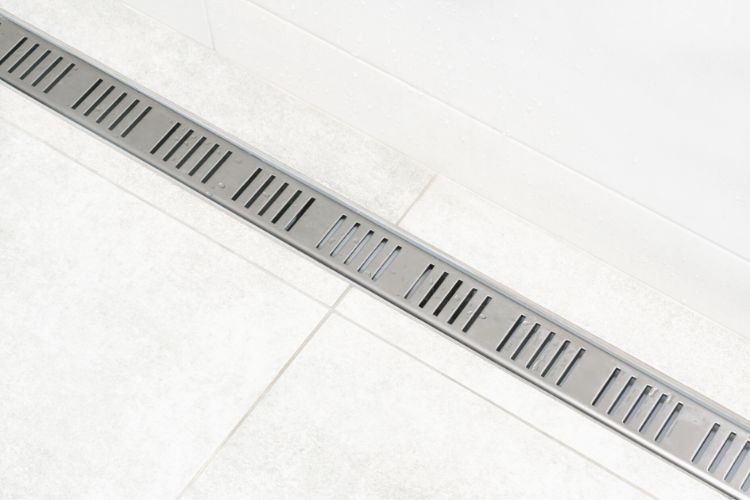
Linear drains are typically found along one wall of the shower and require a channel to be built into the shower floor. They are often used in larger shower stalls or walk-in showers and can be customized to fit the specific needs and design of your bathroom.
Unlike the point drain, a linear drain only requires the sloped floor to run in one direction.
Features and Benefits of a Linear Drain
- Linear drains offer a larger surface area for water to flow into, which can improve drainage speed and reduce the risk of water pooling in your shower.
- Often designed with a sleek, modern look that can enhance the overall aesthetic of your bathroom.
- A linear drain can be customized to fit the specific size and design of your shower, making them a versatile option for any bathroom.
What Shower Floor Drain Designs are Available?
The design of your drain can dramatically alter the ambiance of your bathroom. Taking into account the look you’re striving for is key when choosing from the options, as yours should match and enhance the style of the space.
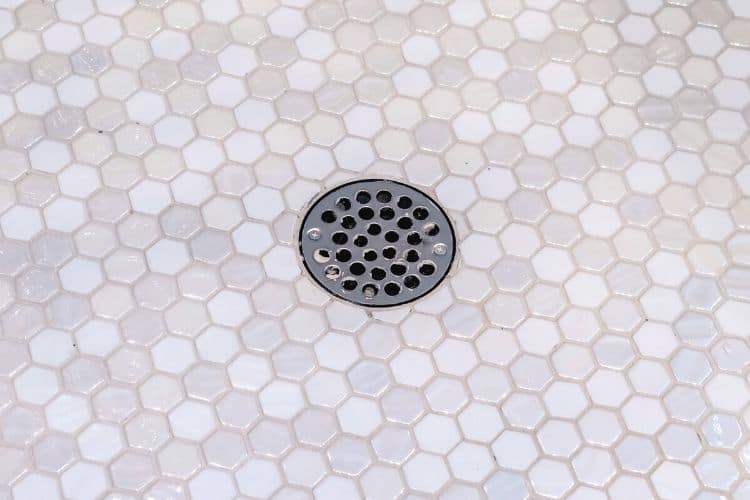
1. Circular or Square Drain Grate
Circular grates tend to be perfect for creating a classic, timeless look in traditional bathrooms, particularly those with smaller shower floor tiles. Square grates, on the other hand, are the ideal choice for giving your bathroom a more modern and contemporary edge, particularly when using square tiles.
2. Decorative or Hidden Drain
Decorative models are made to stand out and can add an attractive touch to your bathroom. For a subtler, more modern aesthetic, hidden models are the perfect choice; the subtle design makes them almost undetectable.
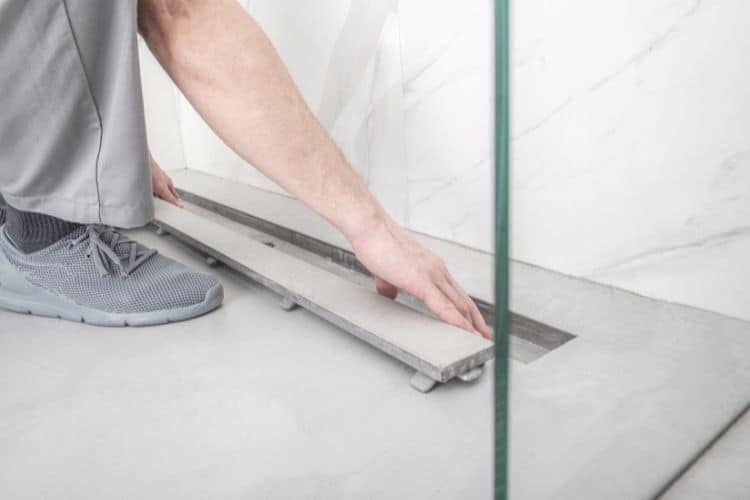
3. Tileable Drain Grate
Another option for those who want a virtually invisible drain is to get a tileable grate. This type of drain is designed to be covered with the same tile as the rest of your bathroom, which can help to seamlessly blend the drain into the rest of the shower floor. These work particularly well with showers with large tiles.
Tileable grates are often used in custom or high-end bathrooms and can add a touch of luxury to your space.
how many Components Does a Shower Drain Have?
Both point and linear drains can come as a signal piece, three-piece, or multi-piece shower drain.
1. Single-Piece
Single-piece drains are the simplest type of drain, fabricated in a single piece and typically being the easiest to install. These systems are ideal for those looking for a straightforward solution that doesn’t need too much maintenance and are common in tiled showers with concrete floors.
2. Three-Piece Shower Drains
A three-piece shower drain features three distinct parts: the body, strainer, and trap. This setup is popular due to its flexible installation options; there’s more freedom to rearrange the three pieces as required. These are commonly used in a one-piece shower stall.
3. Multi-piece
Multi-piece shower drains offer the most advanced drainage system of them all. Composed of a variety of different elements, these systems are tailored for specific areas and needs.
Multi-piece models include additional attachments, such as seals and secondary strainers, which allow more flexibility than either one or three-piece drain setups can offer. They can also be designed to fit multiple shower floors’ layout or shape while still providing powerful drainage abilities.
What Factors Should You Consider When Buying a Shower Drain?
When choosing a drain, there are two factors to consider to ensure that you make the right choice for your bathroom, drainage speed and maintenance.
Drainage Speed
To prevent standing water in the shower, you need to ensure water flows smoothly and quickly away from the floor. The size of your grate, the slope of your floor, and the capacity of your plumbing system will all play into how quickly water drains.
Maintenance System
Cleaning and maintenance must be taken into account when selecting a drain. To ensure it and your plumbing remain in good condition for years to come, there are several matters to consider – the type of grate, how easy it is to access the main body, and the durability of the materials used.
Wrapping Up: Point vs Linear Drains
Wrapping up, it is important to think carefully about the type of shower drain that best suits your bathroom. From point drains to linear drains, there are numerous options available, and factors such as drainage speed, upkeep, and design should all be taken into account.
We hope this article has given you the knowledge you need in order to make the right decision for your bathroom. If you found it useful, why not leave a comment or share it on social media?
Frequently Asked Questions
What is the difference between a shower and a floor drain?
A shower drain is specifically designed to direct water away from a shower, while a floor drain serves as protection against flooding in areas such as basements and garages by channeling water away from the floor.
What size drain is required for a shower?
When it comes to selecting the size of drain for a shower, you need to factor in both the dimensions of the shower and how much water will flow into the drain. It’s wise to consult with a professional such as a plumber or drainage specialist so that you get the optimal size for your particular needs.
What are the different types of shower drain assemblies?
Depending on the size, shape, and design of your shower, as well as your own preferences, you can choose from a variety of shower drain assemblies including single-piece, three-piece, or multi-piece drains.
